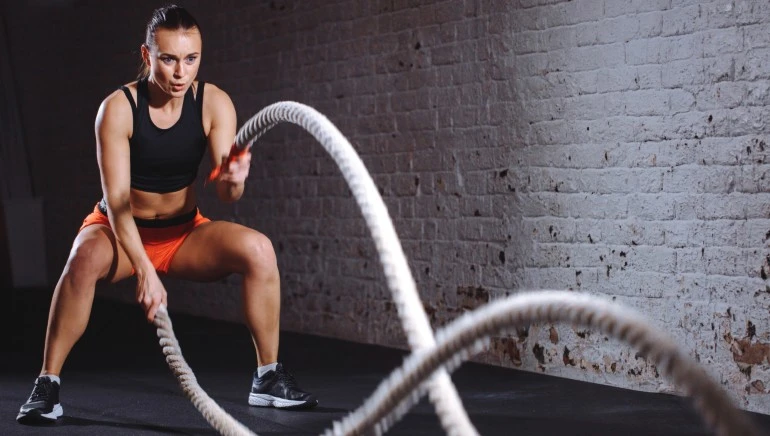Lunge Variations: Best 4 Lower Body Strength
Lunges are excellent for your lower body, particularly your buttocks. Try these lunge variations to form your buttocks like a peach.

Lunges are a unilateral exercise that helps increase lower body strength. Working one side at a time helps to strengthen your legs and buttocks. You may also enhance your stability and mobility by performing lunges. The exercise increases balance and strength, making it a popular addition to training programs. To perform lunges, place one leg forward with the knee bent and the foot flat on the floor. The opposite leg should be positioned behind. This may seem difficult at first, but with practice, you may attempt numerous lunge variants to tone your buttocks.
[web_stories title=”false” excerpt=”false” author=”false” date=”false” archive_link=”true” archive_link_label=”” circle_size=”150″ sharp_corners=”false” image_alignment=”left” number_of_columns=”1″ number_of_stories=”5″ order=”DESC” orderby=”post_title” view=”circles” /]
What are lunges?
According to fitness guru Rhea Shroff Ekhlas, lunges are a strengthening and toning workout for the lower body. They target important muscles such as the glutes, hamstrings, and quadriceps, giving your posterior a thorough workout. Lunges engage these muscles, strengthening and toning them, resulting in a firmer, more contoured buttocks. So, lunges are one of the finest workouts for toning the buttocks.
Hold the lunge for stronger glutes. Image courtesy of Shutterstock
Lunges use big lower-body muscle groups, which may boost metabolism, according to a 2015 study published in the Journal of Preventive Medicine and Public Health.
Variations of lunge
Try these lunge variations to improve your lower body strength and stability.
Strength training exercises
1. Forward lunge.
Step one foot forward.
Lower your body until your knees are bent at a 90-degree angle.
Keep your body straight and your shoulders back.
2. Reverse lunge.
To do a reverse lunge, step one foot backwards and lower your body until both knees are bent at 90 degrees.
Maintain proper posture throughout.
3. Walking lunge.
To do the walking lunge, take a step forward with one foot in the lunge posture.
Bring the rear foot forward to meet the front foot, then repeat with the other leg.
4. Curtsy lunge.
Cross one leg behind the other and drop your body into a lunge stance.
Maintain an erect posture while keeping your hips square.
5. Side lunge.
Step to the side with one foot.
Bend that knee while keeping the other leg straight.
Push your hips back and maintain your chest up.
6. Pulse lunge.
Perform a standard lunge, but instead of coming all the way up, pulse up and down slightly in the lunge posture before returning to standing.
7. Lunge while jumping
Begin in a lunge position, then jump explosively, switching legs in mid-air to land in a lunge with the opposite leg forward.
8. The split squat lunge
Elevate one foot behind you on a seat or step.
Lower your body into a lunge stance with the other foot on the ground.
9. Dumbbell Lunge
Stand erect and hold a dumbbell in each hand, arms hanging at your sides.
Take a step forward with your right leg, bending your knee until your right thigh is parallel to the floor.
During the lunge posture, keep your left leg bent at the knee and your weight on your toes.
What are some frequent faults to avoid when performing lunges?
Buttocks toning
When lunging, avoid these frequent mistakes to maximize efficacy and reduce injury risk:
- Avoid overextending by keeping your front knee aligned with your ankle.
Leaning forward: Maintain an upright posture to utilize the appropriate muscles and avoid back pain. - Neglecting core engagement: Tighten your core muscles to stabilize your body and improve balance.To avoid pulls or strains, warm up your muscles before lunging. Avoid rushing through repetitions and focus on controlled movements to ensure proper form and muscle engagement. Maintain stability and avoid twisting by ensuring both feet are firmly planted and facing forward.
Also Read: 18 Lunge Variations That Will Work Your Butt From Every Angle
Who shouldn’t perform lunge variations?
Some lunge variants, such as leaping lunges, may not be ideal for everyone.
Lower body
Lower body workout
Experiment with several lunge variants to tone your buttocks. Image credit: Adobe Stock.
- People who are concerned about their joints or their balance.
- Those with knee, hip, or ankle difficulties should avoid high-impact exercises to avoid increasing their discomfort or injury.
- Beginners or individuals without core stability may have difficulty maintaining good form, increasing the risk of injury.
- Pregnant women should consult your doctor before performing lunge variants because to changes in balance and probable pelvic strain.
- Lunges are a strength-training exercise with several variants. However, before trying them out, prioritize safety and select lunges that suit with your fitness level and physical condition.
Also Read:
A combat rope allows you to do a variety of waves, smashes, and other dynamic moves. Image courtesy of Shutterstock
Health Conscious Plus
Welcome to Health Conscious Plus Find health insights, disease management tips, meal plans, and mindful living strategies for a healthier life.



